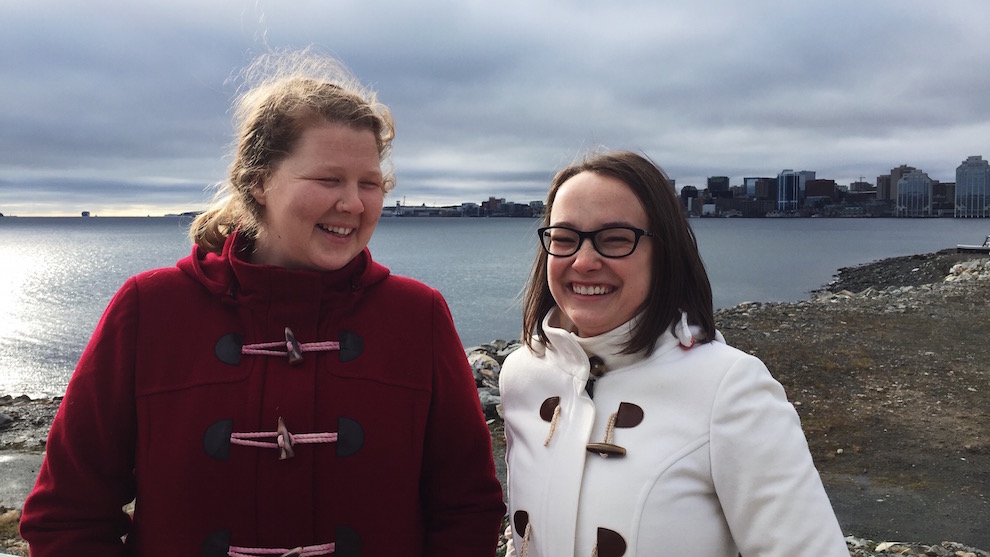Community
Undo Endo: Finding support for endometriosis
Two women looking for support find each other

caption

caption
Brenna Shannon and Iwona McEwen found each other during a time of need.Iwona McEwen lives with a painful and incurable disease and was desperate to find someone who understood her battle.
She hoped to find one person for support. Instead, she found 39.
Due to that response, McEwen created a support group for women with endometriosis, Undo Endo, with Brenna Shannon early this year.
In less than a year, Undo Endo has become the biggest group of its kind in Nova Scotia. It provides women with what Shannon said is “more guidance in one meeting than they have in years with doctors.”
Shannon adds the support group’s goal is to make people feel like they are validated.
“Just having other people who just know, it feels so good,” she says.
McEwen agrees.
“I think for people who don’t have it, they need to understand that there is a level of pain that you might not understand,” she says. “It’s hard to understand something you’ve never experienced.”
From puberty, McEwen, 32, has been faced with excruciating, chronic pain. Without a way to physically show her pain, she was dismissed and felt crazy. The pain was felt in her abdomen throughout the month, not just during her period.
It wasn’t until 2016 that McEwen was diagnosed.
Shannon, 33, has a similar story. She was diagnosed in 2006 with endometriosis that left her debilitated and bedridden for several months at a time.
Ten per cent of women suffer with endometriosis, spending an average of seven to nine years trying to find a diagnosis. This also involves seeing an average of five to seven doctors before receiving that diagnosis.
Many women express that they have often been told by doctors that the pain they are feeling is normal, says Shannon. This leaves women feeling discouraged and ignored.
“Being in pain and being ignored makes you feel worthless and crazy,” says Shannon.
Dr. Elizabeth Randle, a specialist in endometriosis at the IWK Health Centre, says a delayed diagnosis often occurs because doctors don’t know why endometriosis happens. Therefore, it can be difficult to diagnose the disease in early stages, especially when the symptom is pain.
“I think pain is a very difficult symptom to treat. Pain is very individualized and every patient’s experience is going to be different. It’s not an objective finding,” says Randle.
Randle says the best way to help doctors speed up the diagnosis is to keep a pain journal over the course of a couple of months. This is particularly useful for people who don’t have a family doctor.
“When you go to a walk-in clinic that has no history of your pain, it is very easy for them to put up a wall, especially with the opioid crisis,” says Randle.
McEwen and Shannon hold monthly meetings helping women understand what is happening to their body. They share resources, help each other navigate through the health-care system and also encourage each other. They want to help women feel supported through this process.
“People talk about horrible stories, but then we laugh and we give advice,” says Shannon.
Shannon says sometimes women only need to come to one meeting to see that they are not alone.
Outside of the meetings, the women have a Facebook group where they openly discuss how they feel, new treatments they are trying and provide around the clock support.
“It’s awful dealing with this disease and trying to get help for it,” says Shannon.
The support group has applied for funding so they can provide more information to the community, says McEwen. They are also currently inviting professionals from the area to talk to women about how to live with the disease.
McEwan says coming together to learn more about the endometriosis and educating each other will create a “faster treatment and (a) faster diagnosis.”
“It’s real and it’s a hard journey,” says Shannon. “Support is really helpful.”

